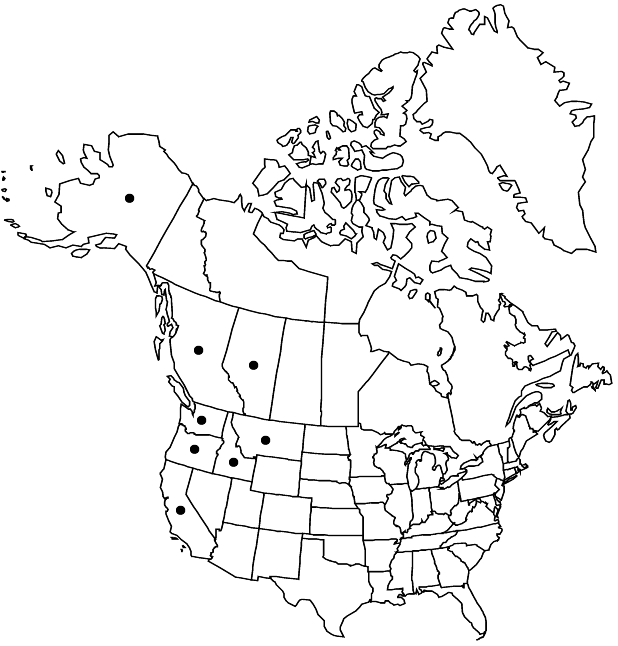Mitella trifida
Edinburgh New Philos. J. 7: 185. 1829 ,.
Plants not stoloniferous. Flowering stems 12–45 cm. Leaves: petiole 2.5–10 cm, subglabrous or short stipitate-glandular and long stipitate-glandular, longer hairs retrorse, white, tan, or brown; blade cordate, cordate-ovate, or reniform, usually shorter than or sometimes ± as long as wide, 1.2–6 × 2–8 cm, margins shallowly 5- or 7-lobed, crenate, uniformly ciliate, apex of terminal lobe rounded to obtuse, surfaces short stipitate-glandular and sparsely long stipitate-glandular; cauline leaves absent. Inflorescences 1–3, closely 4–20-flowered, 1 flower per node, weakly secund or not secund, 12–45 cm, short stipitate-glandular and, sometimes, sparsely long stipitate-glandular proximally and distally. Pedicels 0.3–1.5 mm, short stipitate-glandular. Flowers: hypanthium campanulate, 1–1.5 × 1.5–2.5(–3) mm; sepals erect or spreading, whitish or purple tinged, oblong to triangular-ovate, 0.8–1.5 × 1–1.3 mm; petals white, sometimes pink or purple tinged, 3-lobed or, sometimes, unlobed, 1–3.5 mm, lobes lanceolate, lateral lobes ascending; stamens 5, opposite sepals; filaments white, 0.1–0.2 mm; anthers 0.1–0.2 × 0.1–0.2 mm; ovary ca. 1/2 inferior; styles divergent, flattened, 0.1–0.2 mm; stigmas unlobed. Seeds dark reddish brown, 0.7–1 mm, pitted. 2n = 14.
Phenology: Flowering May–Jul.
Habitat: Deep forest, moist wooded and open slopes
Elevation: 300-2000 m
Distribution

Alta., B.C., Alaska, Calif., Idaho, Mont., Oreg., Wash.
Discussion
Mitella trifida varies in flower size, petal-blade lobing, and pubescence. Plants with relatively small flowers and petal blades entire or shallowly trifid and often purplish have been named var. violacea. Plants matching this description occur in British Columbia, Montana, and Washington and appear to represent a minor morphological variant that does not warrant recognition.
The Gosiute Indians of Utah made an infusion from roots of Mitella trifida to treat colic (D. E. Moerman 1998).
Selected References
None.